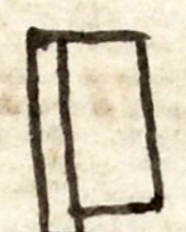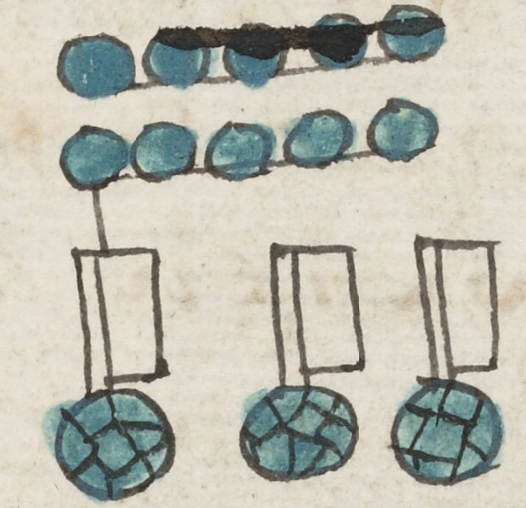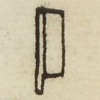panitl (Mdz71r)
This black-line drawing of the iconographic example of a rectangular flag or banner (panitl) also serves as a notation for the number 20. It is attached to a vertical stick, and the flag-part appears to be white.
Stephanie Wood
See the contextualizing image to see how each banner counts for twenty, plus an additional ten ones, adding up to seventy, which is what the gloss indicates ("setenta," Spanish for 70). The twenties and the ones are attached to round turquoise-colored mosaics, which stand for xihuitl (year). So, the reference is to 70 years, the age of an older man ("viejo" in Spanish), someone with "hijos and nietos" (children and grandchildren), who is featured on the folio.
Stephanie Wood
setenta
c. 1541, or by 1553 at the latest
flags, banners, banderas, números, cuentas, matemáticas, veintes, turquesa, xiuhpohualli, año, turquesa, xihuitl

pan(itl), flag or banner, https://nahuatl.wired-humanities.org/content/panitl
cuachpami(tl), a standard, a flag, or a banner, https://nahuatl.wired-humanities.org/content/cuachpamitl
(una bandera que tiene el valor del número veinte)
Codex Mendoza, folio 71 recto, https://digital.bodleian.ox.ac.uk/objects/2fea788e-2aa2-4f08-b6d9-648c00..., image 152 of 188.
Original manuscript is held by the Bodleian Libraries, University of Oxford, MS. Arch. Selden. A. 1; used here with the UK Creative Commons, “Attribution-NonCommercial-ShareAlike 3.0 License” (CC-BY-NC-SA 3.0)



